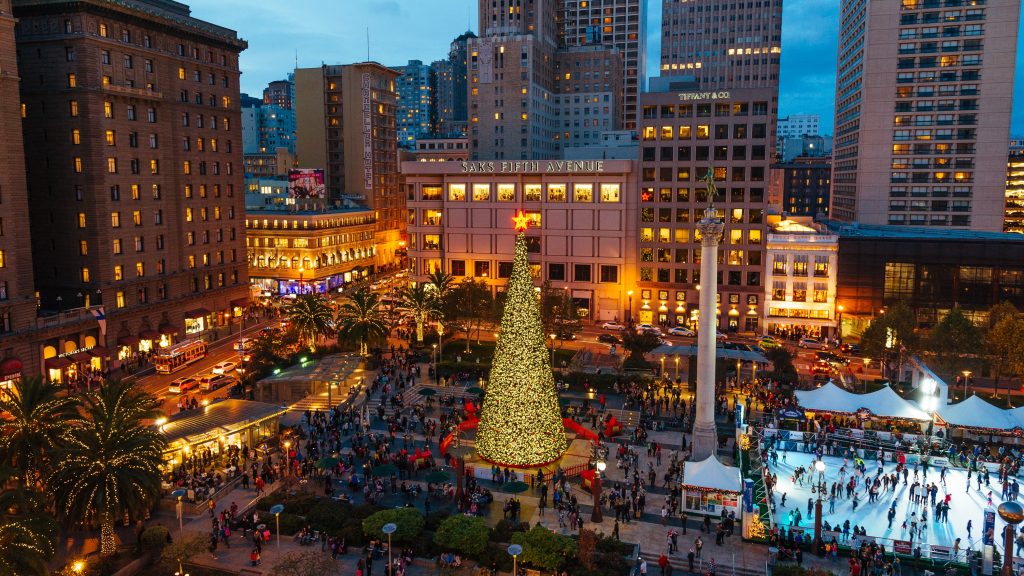Military Fares has a unique connection to Admiral Carl J. Seiberlich and the NASA moon landing missions. Read below for the ultimate travel destination: space!
Table of Contents
Admiral Carl J. Seiberlich
Admiral Carl J. Seiberlich Born in Jenkintown, PA, RADM Seiberlich graduated from the U.S. Merchant Marine Academy in 1943. He served on two merchant vessels prior to commissioning in the U.S. Navy, where he served as a navigator on the USS Mayo (DD422) during WWII. The Mayo saw action in both the Atlantic and Pacific. In 1945, the Pacific theater was present in Tokyo Bay during the Japanese surrender aboard the USS Missouri.

After the war, he completed flight training at Lakehurst, NJ. Admiral Carl J. Seiberlich received his aviator wings in lighter-than-air (blimp) craft, landing them occasionally on aircraft carriers. In 1952, he received the Harmon International Trophy for achievement in aeronautics from President Harry Truman. This award recognized RADM Seiberlich’s work in the development and fleet introduction of the first operational, variable depth, towed sonar. The current fleet ASW doctrine is still based on techniques created during this initial period.
Cuban Missile Crisis
In 1962, during the Cuban Missile Crisis blockade, Admiral Seiberlich had a significant role. His primary responsibilities were surveillance, reconnaissance, and anti-submarine warfare. Due to exigent circumstances, he also qualified to land helicopters on aircraft carriers at this time. During the mid-1960s, he qualified to land a multi-engine airplane on aircraft carriers. Rear Admiral Seiberlich remains the only aviator in the Navy’s history qualified to land blimps, airplanes, and helicopters aboard an aircraft carrier. Additionally, he was also seaplane qualified. He later commanded the fleet oiler USS Salamonie (A026) and decommissioned her in December 1968.
USS Hornet
In May 1969, he became the Commanding Officer of the USS Hornet (CVS-12). Almost immediately, the Hornet was selected as the Prime Recovery Ship for the NASA moon landing missions. RADM Seiberlich became the Commander of, the Primary Landing Area Recovery Group for all DoD forces supporting NASA in the Pacific Ocean.
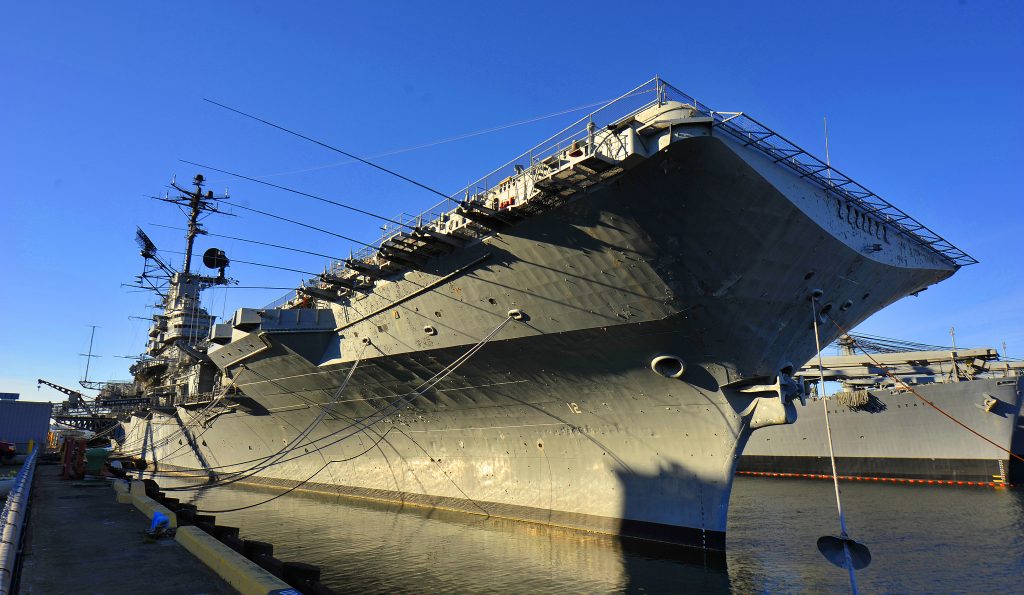
Captain Seiberlich was Commander of the Primary Recovery Forces in the Pacific Ocean and as such, was the “on scene” boss for the entire recovery operation. The recovery process was greatly complicated by the moon germ issue and the potential for contamination of the earth
Recovery Missions
In July, Admiral Carl J. Seiberlich directed the safe recovery of astronauts, command module, and lunar samples for Apollo 11. This was of incredible importance as it was the first moon landing mission. The Hornet repeated this flawless performance in November when the Apollo 12 “all Navy team ”was recovered.
President Nixon and a host of Navy, NASA, and government dignitaries all watched Seiberlich and his crew executed a flawless recovery. The astronauts recovered were Neil Armstrong, Buzz Aldrin and Michael Collins. The spacecraft and its precious moon rocks were also recovered. Once the astronauts were inside their quarantine trailer, the President welcomed them back to earth. Over 500 million people watched the ceremony on live TV worldwide. The Hornet, under the inspired leadership of its skipper, fulfilled President Kennedy’s 1962 challenge. President Kennedy’s wish was to “send a man to the moon, and return him safely to earth, before this decade is out.”
In June 1970, he decommissioned the USS Hornet in Bremerton, WA.
Post USS Hornet and Retirement
After becoming the first Merchant Marine Academy graduate to achieve flag rank, Admiral Seiberlich was Commander of ASW Group 3. In order to complete a critical fleet research project called UPTIDE, his leadership was necessary. He then became Director of Aviation Programs; then Deputy Chief of Naval personnel; and finally Commander, Naval Military Personnel Command before retiring in 1980.
Seiberlich retired from the Navy in 1980. He was decorated with the Legion of Merit (6 times) and the Air Medal. Following his retirement, he became Director of Personnel with VSE Corporation. Afterwards, in 1982 he became the President of the U.S. Maritime Resource Center in King’s Point, NY.
In 1983 he joined American President Lines as the Director of their Military programs. Admiral Seiberlich was recognized for his work, in support of Operation Desert Shield and Desert Storm. He was awarded the 1994 Vincent T. Hirsch Maritime Award for Outstanding Leadership by the Navy League of the U.S.
As a civilian, he continued to serve his country and its maritime needs. In 1983, he joined American President Lines (APL) as Director of Military Programs . Later in 1994, he was awarded the Vincent T. Hirsch Award for Outstanding Leadership by the Navy League for his contributions. The award recognized his efforts in meeting the rapid, large scale sealift needs of Operation Desert Shield/Storm. He continued to actively participate in maritime affairs until 2005. Correspondingly, he served as the U.S. representative to the International Standards Organization committee. Here Rear Admiral Seiberlich worked to improve worldwide security for inter-modal freight transportation to prevent acts of terrorism.
Late life
Seiberlich and his wife Trudy are survived by two sons, Eric Paul Seiberlich and Curt August. They also have a daughter, Heidi Seiberlich. All together there are four grandchildren: Cole Frederic Seiberlich, Blair August Seiberlich, Carl Robert Weimer, and Margaret Whitney Weimer. He died at Reston Hospital Center in Virginia on March 24, 2006. A memorial Catholic mass was held on July 11 at the Fort Myer Chapel in Arlington, Virginia. Afterwards, he was buried with full military honors at Arlington National Cemetery.
Connection To Military Fares
MilitaryFares is a small company that founded in 1997. The purpose of MilitaryFares is to help service members find discounted travel deals. From hotels to cruises to flights, MilitaryFares has a wide range of travel deals for the everyday needs of any military family. Its locations in the United States and Europe make it easier for the company to find more exclusive deals to support military members and their families.
A TV Coincidence
You may be wondering, what is the connection that MilitaryFares has to space? Let’s go back to post-World War II Europe, in which American soldiers were stationed all over parts of Germany. Specifically, the town of Augsburg in Bavaria had a heavy military presence. This is where Rudi Seiberlich was born. Growing up in the 60s, he always had an admiration for the many American service members he watched help in his town. Among Rudi’s many interests as he was growing up, was that of space. He was very interested in the Apollo missions and the impact they made on the world. One day, as Rudi was watching the latest reports on the Apollo missions, his name flash across the TV. Well, part of his name.
As Rudi was watching TV, he saw Admiral Carl Joseph Seiberlich, the commander of the USS Hornet on TV. The USS Hornet was responsible for the recovery of the crew of Apollo 11 and Apollo 12. Admiral Seiberlich was the commanding officer that directed all operations related to the Apollo recovery. At the discovery that he could potentially be related to a man that had direct interaction with one of his passions, Rudi decided to craft a note to Admiral Seiberlich. As a young teenage boy, Rudi took the note to the entrance of the military base. There he asked the military policeman to kindly ensure his note was delivered to Admiral Seiberlich.
A Travel Idea for Service Members
Rudi waited for many months to get a response and much to his surprise, he received one! Afterward, Admiral Seiberlich not only wrote him back but also gave him an autographed picture of himself with President Nixon. He also confirmed that they were distant relatives. This launched the beginning of a friendship between Rudi and Admiral Seiberlich.
They kept in touch throughout the years giving each other updates on what they were pursuing. In the late 90s, Rudi shared that he started a travel company in Europe. Admiral Seiberlich immediately thought that Rudi should offer the same service to military members. And thus, MilitaryFares was born!
We strive daily to provide the best services and cheapest travel tickets for all service members and their families. We understand that serving is a selfless sacrifice and we also understand the intricacies of military life. Our discounted military tickets and fares.
Modern Day Artemis Missions
Formerly called Exploration Mission-1, this uncrewed mission was an extensive test of the Space Launch System (SLS) and the Orion module.
The Space Launch System is the most powerful rocket ever built. It generates 8.8 million pounds of thrust on liftoff, making it 1.3 million pounds more powerful than the Saturn V rocket used in the Apollo missions.
Artemis 1’s journey took it 450,000km to the Moon, where it orbited 400km above the lunar surface, before continuing approximately 64,373 km beyond into deep space. After a mission length of 25.5 days, the module splashed down in the Pacific Ocean near California on 11 December.
The Modern Day USS Hornet: The USS Portland
A team of sailors aboard USS Portland (LPD-27) recovered an Orion space capsule after it splashed down in the Pacific Ocean on Sunday after a 25-day trip around the moon.
Orion is an unmanned capsule that was launched into space on Nov. 16 as part of the Artemis I lunar orbit mission. During its time in space, Orion traveled 1.3 million miles, according to NASA.
“Upon Orion’s successful splashdown in the Pacific Ocean west of Baja California… flight controllers in mission control at NASA’s Johnson Space Center in Houston spent about two hours performing tests in open water to gather additional data about the spacecraft, including on its thermal properties after enduring the searing heat of re-entry through Earth’s atmosphere,” reads a Sunday evening statement from NASA.
“The ship will soon begin its trip back to U.S. Naval Base San Diego, where engineers will remove Orion from the ship in preparation for transport back to Kennedy Space Center in Florida for post-flight analysis.
Navy Partnership with NASA
The Navy has been practicing for several years to recover the Orion capsule once it makes its watery landing off the coast of the Baja peninsula, near Guadalupe Island. Portland was underway with Littoral Combat Ship USS Montgomery (LCS-8) which provided security for the splashdown site. In 2018, USS John P. Murtha (LPD-26) conducted several recovery tests, both in the daylight and at night.
USS Anchorage (LPD-23) and USS Somerset (LPD-25) also performed tests in early 2018. Tests with the Navy and NASA began in 2014. The Navy provides San Antonio-class amphibious transport dock ships for the recovery of the Orion capsule as part of a partnership between NASA and the sea service.
The extensive aviation and medical facilities aboard San Antonio’s designed to support combat Marines made the ships an ideal platform to recover the capsule. The partnership with the Navy and NASA extends back 45 years to the last time the Navy recovered a deep space capsule. That time it was the Apollo 17 mission.
What is Artemis?
The Artemis programme is a series of ongoing space missions run by NASA.
Three Artemis missions are currently in progress. Artemis 1, an uncrewed test flight completed 11 December which circled and flew past the Moon; Artemis 2, a crewed flight beyond the Moon, which will take humans the furthest they’ve ever been in space; and Artemis 3, which will land the first female astronaut and first astronaut of colour on the Moon, and involve spending a week performing scientific studies on the lunar surface.
Artemis 3 will be the US space agency’s first crewed Moon landing mission since Apollo 17 in 1972. However, NASA’s long-term goals are even more ambitious. NASA intends to launch a future crewed mission to Mars using the technology and research developed during the Artemis flights.
This ‘Moon to Mars’ plan involves building a new space station in lunar orbit and, eventually, a habitable Moon base.
Why the Return to the Moon?
NASA is not simply aiming to repeat the feats of the Apollo missions with Artemis, but rather to go to the Moon ‘and stay there. That means investigating the possibility of establishing bases both in lunar orbit and on the Moon’s surface. Although the primary goal for now still involves returning humans to the Moon by the middle of the decade.
Key NASA mission objectives include:
- Equality: a chief aim for NASA is to land the first woman and first person of colour on the lunar surface.
- Technology: from rockets to spacesuits, the technologies currently being developed are designed to pave the way for future deep-space missions.
- Partnerships: the Artemis programme is one of NASA’s first large-scale collaborations with commercial companies, such as SpaceX and Boeing.
- Long-term presence: where the Apollo 17 crew spent three days on the lunar surface, Artemis aims to establish a base to extend the trips to weeks and possibly months.
- Knowledge: as more is known about the Moon compared with 50 years ago (and technologies have greatly advanced), NASA claims that this next series of missions will be able to retrieve samples more strategically than during the Apollo era.
- Resources: the discovery of water on the Moon and potential deposits of rare minerals hold promise for both scientific and economic exploration and exploitation.
Visiting the USS Hornet
Today the USS Hornet is open to the public and permanently moored at the former Alameda Naval Air Station. This station served many functions during World War II, providing combat training to carrier squadrons, commanding patrol and scouting operations, and providing aviation support for Naval supply bases. Alameda was a major aviation gateway to the Pacific and berthing location for the Pacific fleet, including the first USS Hornet.
Alameda, California
The USS Hornett is located in Alameda, California. It has various exhibits and other items to tour. The museum is open Friday, Saturday, Sunday, and Monday. The museum hours are 10 am to 5pm. They offer a variety of ticket prices to include a military discount.
The Bay Area
Alameda is a city in Alameda County, California, located in the East Bay region of the Bay Area. The city is primarily located on Alameda Island, but also spans Bay Farm Island and Coast Guard Island, as well as a few other smaller islands in San Francisco Bay.
The San Francisco Bay Area has a broad array of cuisines from various countries of Africa, Asia, the Americas, and Europe. While San Francisco probably has the widest variety of any of the Bay Area cities, locals will often tell you to go outside of San Francisco for the best of some cuisines, such as Fremont for Afghan or Indian or Pakistani, Burlingame for Jewish, or Redwood City for Mexican. The area has also developed its own array of localized Chinese cuisines; this started in San Francisco and has expanded throughout the Bay Area in recent years.
The Bay Area is also home to some of the world’s finest wine country, including Napa Valley and Sonoma. Moreover, it has waterfront towns and dramatic beaches. The tech-savvy southern end of the bay known as the Silicon Valley, where lunchtime ideas at Google, Facebook, and Apple, turn into the next brilliant innovation.
The Wine Country
California is America’s No. 1 wine producer, producing 81 percent of U.S. wine sales. There are approximately 637,000 acres of grapes. This makes the Golden State the fourth-largest wine producer in the world. Not surprisingly, those endless rows of vines generate amazingly diverse wine tasting experiences—including everything from high-end pairings in the Napa Valley to neighborly barn tastings in Sonoma County to cave tours and winemaker chats from Mendocino County to Temecula. Start your research here and let your palate be your guide.
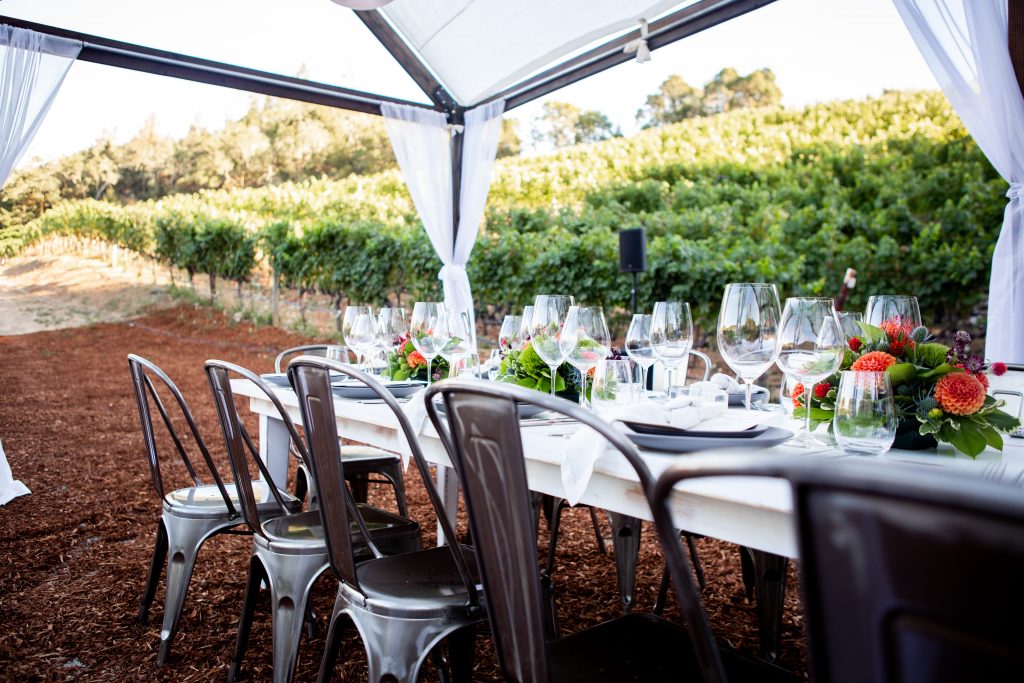
Nature Adventure in the Bay Area
It’s no coincidence that Northern California has a high concentration of outdoorsy types. Many people are drawn to living in Nor Cal. The region has stupendous — and usually easily accessible — natural scenery (despite the occasional fog). Wilderness lovers headed to the San Francisco Bay Area should bring along the below list of some of our favorites
Muir Woods
To get the true California redwood experience, head 12 miles north of San Francisco to Muir Woods. This mossy, mystical grove, named after John Muir, the founder of the Sierra Club, is home to towering, old-growth trees, some taller than 258 feet and older than 1,200 years.

The Presidio
Considering that San Francisco is only seven miles by seven miles, the fact that there are 11 miles of hiking trails winding through the Presidio is pretty significant. Those miles include the breathtaking Golden Gate Promenade, from where you can see windswept views of the bay and the famous bridge. Other points of interest include Crissy Field, Fort Point, and Baker Beach.
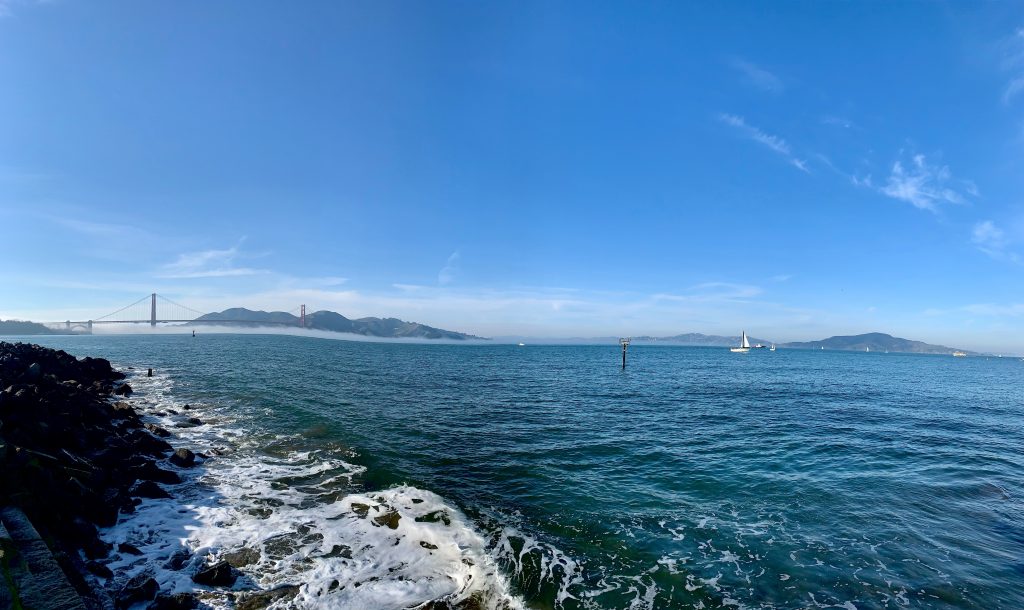
Golden Gate Bridge
San Francisco’s biggest park, a long and narrow rectangle that juts from the breakers three miles into the city, closes its main drive on weekends, when many turn out to bike and jog amidst the gardens, lakes, and museums.
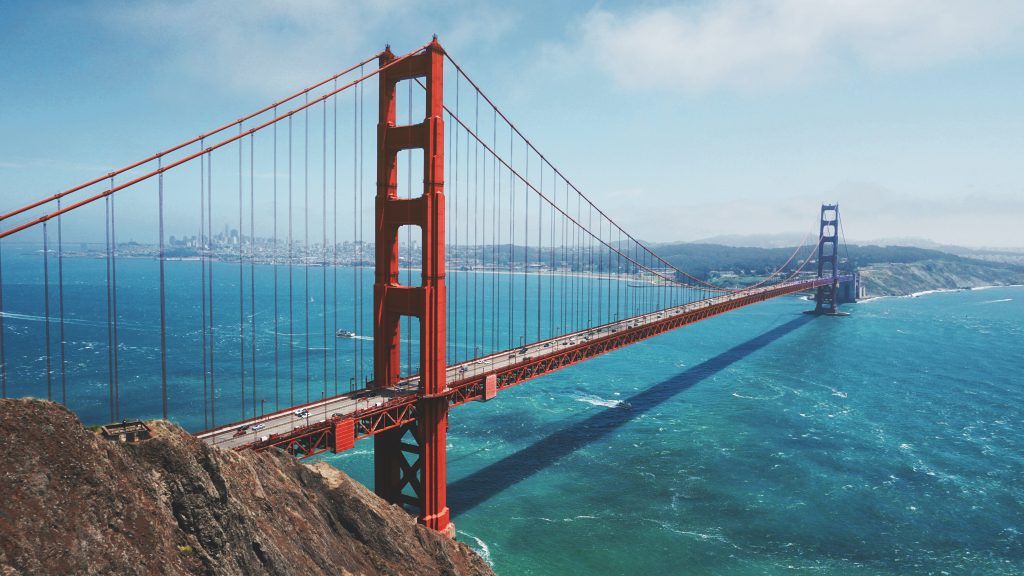
Ocean Beach
A popular spot for experienced surfers, Ocean Beach is also a great place to stroll, skate, play volleyball, or have a bonfire. On the northern end of the beach are the ruins of the historical Sutro Baths. The stretch lies on San Francisco’s western shore and is run by the National Park Service.
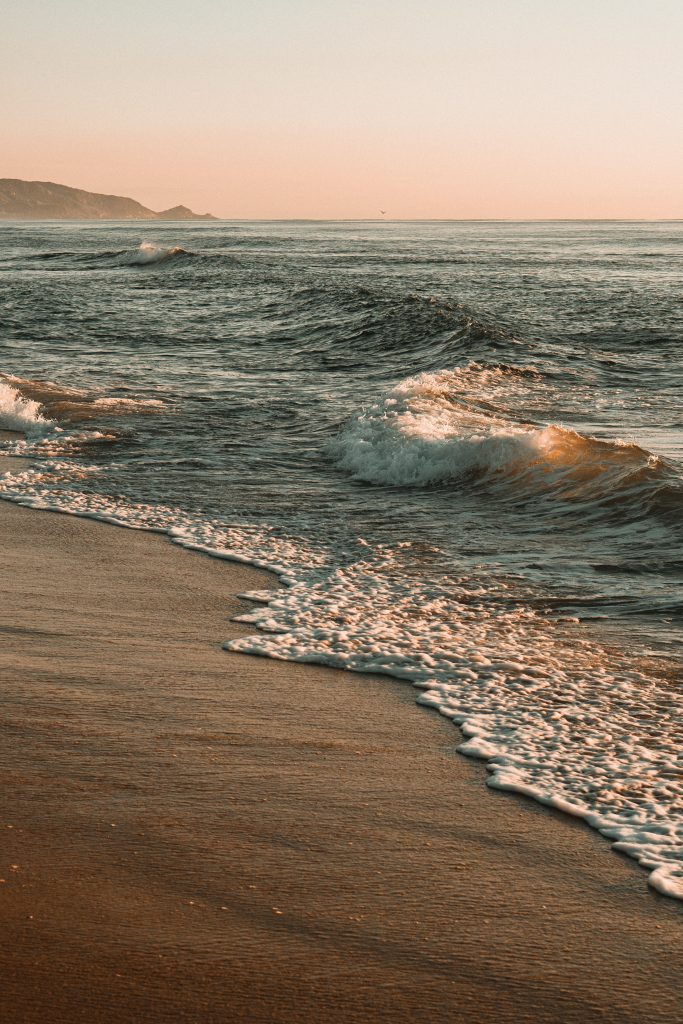
Other Attractions
The bay area has other popular attractions for the less outdoorsy.
Alcatraz
Located one-and-a-half miles from Fisherman’s Wharf, Alcatraz is one of the city’s most popular attractions. A visit to the island includes a tour of the cell house where visitors can see where the prisoners lived. Although the last inmates were transferred off the island in 1963, the main prison block is still standing. With its steel bars, claustrophobic (9 x 5-foot) cells, mess hall, library and “dark holes,” it is still structurally intact.
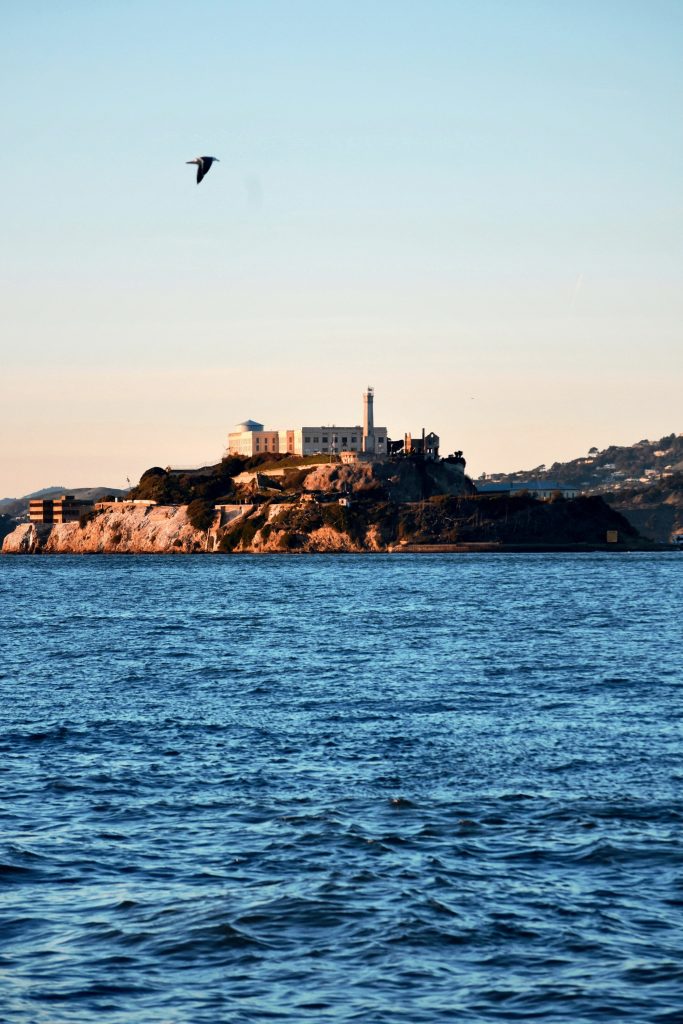
Union Square
Lastly, Union Square is the neighborhood with the most abundant retail therapy, not to mention fine hotels, great meals and green spaces to sit outside and enjoy San Francisco’s temperate climate.
Virtually every name brand in fashion is on or near the 2.6-acre square, a landmark park in the heart of the downtown shopping and hotel district.
The Grand Hyatt and Taj Campton Place hotels are just off the square on the Stockton St. side, along with a cluster of upscale boutiques. On the Powell St. side, the Westin St. Francis Hotel holds pride of place. South of Market St. at the foot of Powell St., the Westfield San Francisco Centre is home to Bloomingdale’s and Nordstrom.
